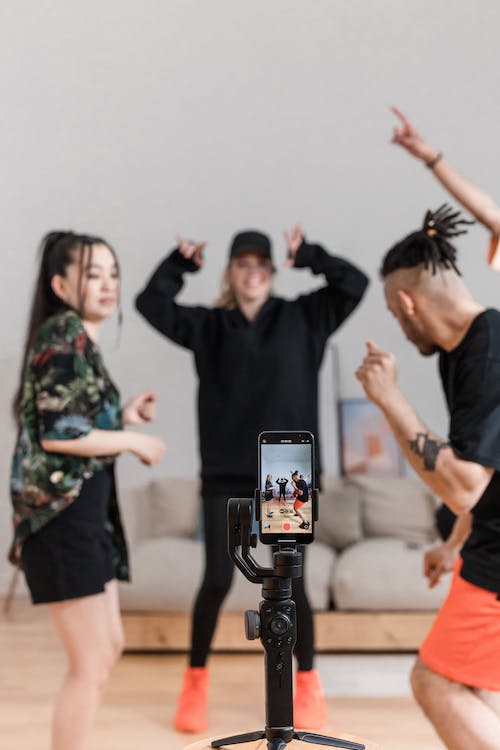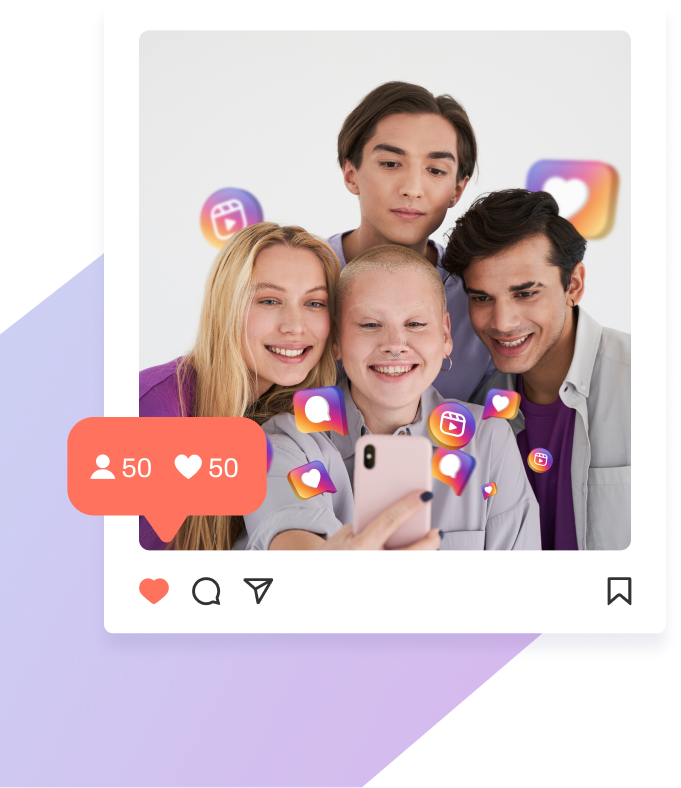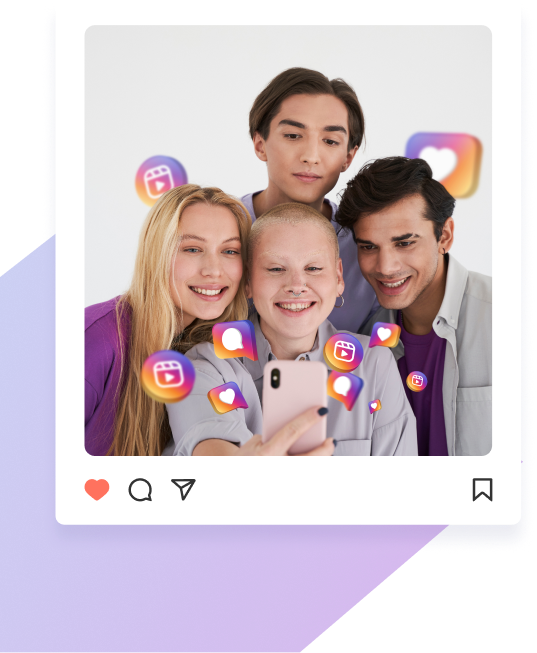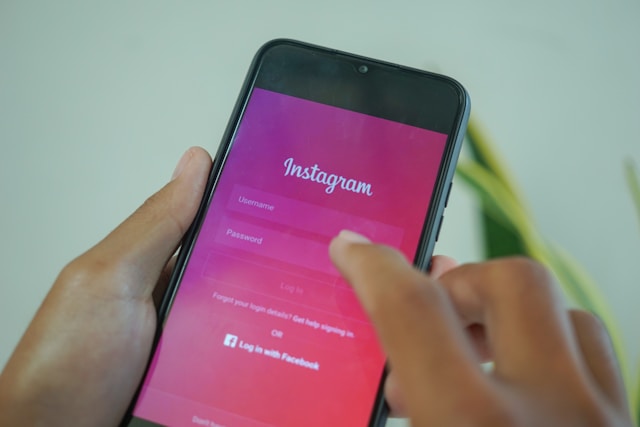TikTok vs Instagram Analytics: What’s Best?
Remember staying indoors during the deadly COVID-19 pandemic? That was the peak of many social media apps, especially TikTok. The video-sharing application now keeps over a billion users worldwide. On the other hand, Instagram is a giant with over 1.3 billion active users.
TikTok vs Instagram analytics results in fierce competition. Their popularity seesaws each month, providing a goldmine of data for brands and influencers to find their perfect match.
TikTok is popular among Gen Z and a hotspot for brands targeting the youth. Meanwhile, Instagram dazzles with its focus on imagery and style, charming a diverse audience with its fun, relatable vibe.
But what’s the best among them? Let’s find out in this article. After reading it till the end, you will know what’s best for you and why.

Understanding Users on TikTok vs Instagram
People know someone by the company they keep. Similarly, to understand these platforms, we’ll have to dig deep into the nature of users on TikTok vs Instagram.
TikTok and Instagram both attract young, ready-to-buy audiences. This makes them marketing goldmines for brands. They share a global presence and a user base under 35. However, their differences are key.
TikTok is a Gen Z stronghold, with Millennials, Gen X, and Boomers following. It’s a female-dominated platform (57% female vs. 43% male). Instagram has around 135 million users in the US alone.
TikTok fans love ads that blend in, preferring products like video games, budget-friendly jewelry, home decor, makeup, and novelty items. They engage well with branded content and influencer partnerships.
On the other hand, Instagram is a Millennial and Gen Z favorite with a more balanced gender split. When we try to identify the target audience on Instagram, we find 48.4% female and 51.6% male. Leading the user count is India, with 230.25 million users, followed by the US (159.75 million) and Brazil (119.45 million).
Instagram users are open to advertising but prefer products that appeal to older Millennials. The list includes higher-end jewelry, professional info products, furniture, clothing, mid-range decor, and premium e-commerce items.
Ads and influencer partnerships work well here, though your content might need to be very visible.

How Content Formats Impacts?
Different types of users prefer different kinds of formats. TikTok and Instagram have their specific type of audience according to their content formats.
Instagram offers a creative playground with diverse content formats. You can add photos and Instagram Reels, post stories, live stream, and use IGTV for longer videos.
The feed on Instagram is similar to many social platforms and allows for seamless scrolling from one post to another. However, the most effective ad formats are Reels and Stories – Instagram’s nod to TikTok’s style.
Meanwhile, TikTok keeps it simple. Users can create and share vertical videos up to 10 minutes long. The unique swipe-up feature to move to the next video encourages users to engage completely with each video, including ads.
While Instagram’s various formats offer creative flexibility, it can also lead to confusion. Juggling ads and content across multiple formats like Photos, Reels, and Stories can be complex. And it may not always yield a high return on ad spend (ROAS).
But TikTok shines with its bright ROAS. Its single content format simplifies the process, making it easier for marketers to optimize content themes and other strategies. This streamlined approach on TikTok often leads to more effective and efficient marketing efforts, leaving Instagram’s complex approach behind.

The Role of Different Content Types
Content types also play a vital role in shaping platforms. Instagram content often features high levels of editing, with filters and effects enhancing its appeal.
Users typically curate their accounts to maintain a consistent aesthetic. Instagram helps them offer a clear glimpse into their style and personality from their profiles.
In contrast, TikTok videos lean towards a more raw, lo-fi, and unedited style.
While filters are available, many users prefer shooting quick videos and uploading them immediately. This approach makes it challenging to discern a user’s overall aesthetic from their TikTok profile.
The nature of content on Instagram and TikTok also varies. Instagram places equal emphasis on both the visual appeal and the subject matter of the content. The platform’s focus on aesthetics makes it ideal for carefully crafted ads that seamlessly integrate with its native content.
However, TikTok prioritizes the subject matter of videos. Creators engage in activities like dancing, lip-syncing, and participating in challenges. While the visual aspect is important, the action of the content truly captivates the audience.
This focus makes TikTok better for influencer partnerships, native-looking ads, and authentic content creation, offering a compelling advertising avenue.
From an Advertising Point of View
Instagram and TikTok both offer advertising opportunities for brands.
On Instagram, brands can showcase their ads through photos and short-form video content in the newsfeed, stories, and IGTV. However, TikTok only allows brands to create video ads up to 60 seconds long. It seamlessly integrates them with other videos, making them look like organic posts.
An interesting comparison between TikTok ads and Instagram Reels ads shows that Reels significantly outperform TikTok. They achieve wider reach, have lower cost-per-click (CPC), and more affordable cost-per-thousand impressions (CPM). This disparity might be due to users being more adept at navigating Instagram than TikTok.
Despite these differences, both platforms are effective for advertising. However, Instagram’s Story and Reel ads tend to be more successful.
Brands should consider experimenting on social media platforms like Instagram and TikTok to learn the most effective marketing strategies.

Which Is Better With Organic Content?
When it comes to organic content, TikTok should be your go-to platform. It helps you reach youth, with over half of its users under 24. These young users have a strong appetite for user-generated content, making TikTok a fertile ground for creators. The platform’s algorithm favors those frequently producing content, offering a wider reach for active creators.
But Instagram prioritizes quality over quantity. Its algorithm rewards content that stands out in quality and garners significant engagement. This approach means that each piece of content has the potential to gain extensive exposure, but only when it’s relevant.
Instagram’s preference for high-quality content aligns perfectly with the needs of B2B brands and busy marketers. They usually have limited time but aim to make a substantial impact with each post. Targeting the perfect hashtags improves the content strategy by hitting the right areas.
This distinction between TikTok and Instagram is crucial for content creators and marketers. While TikTok encourages a steady stream of content, Instagram offers a platform where higher-quality content thrives.
Understanding these nuances helps tailor strategies to each platform’s strengths, ensuring effective and targeted content marketing.
The Difference in Influencer Partnerships
When planning influencer partnerships, it’s essential to distinguish between Instagram and TikTok’s influencer marketing styles.
Instagram is popular for its polished content, making it ideal for brands with a refined aesthetic. Instagram influencers can effectively portray this image if your brand values sophistication and high-quality visuals.
Conversely, TikTok offers a realm of authenticity and spontaneity. The influencers on this platform excel in creating content that feels real and relatable for brands. They carry a more genuine and unpolished approach. As a result, their style resonates with audiences seeking authenticity in sponsored content.

TikTok vs Instagram Reels Algorithm
When we talk about TikTok vs Instagram Reels algorithm, we find many differences. This includes video length, type of content and format, target audience, and advertising opportunities. We have already discussed how these factors influence the marketing strategies.
TikTok’s algorithm excels in content discovery, helping users find new creators and content easily. Instagram Reels algorithm is similar, but it might not be as effective due to Instagram’s variety of content formats.
When choosing between TikTok and Instagram Reels for your small business, understanding their differences is crucial. It helps you create marketing strategies that convert.
TikTok vs Instagram Data Collection
TikTok vs Instagram data collection raises privacy concerns for individuals and businesses. Both platforms continuously face harsh criticism for their weak privacy policies.
TikTok
TikTok’s success is undeniable, with its trendsetting short-form videos making it a global social media sensation. However, new trends often bring new privacy concerns – especially for iOS users.
The app’s built-in browser is a prominent issue. Unlike other apps, TikTok doesn’t offer the option to open links in a default browser. It forces users to stay within the app. This might seem like a minor inconvenience from a user experience standpoint, but it raises significant privacy concerns.
The privacy issue deepens with the fact that TikTok’s in-app browser might capture personal information through a Javascript code. This code can track every tap on the screen, including keyboard inputs. This alarming possibility suggests that TikTok could access sensitive data like passwords and credit card information.
There is uncertainty about whether TikTok actually collects and uses this data or merely can track it.
The Chinese company behind TikTok responded to these concerns, stating they don’t collect keystroke or text inputs through this code. They claim they use the feature for debugging, troubleshooting, and performance monitoring.
But TikTok’s privacy concerns don’t stop there. A recent study by the Microsoft 365 Defender Research team uncovered a vulnerability in TikTok. This flaw could allow attackers to hijack a user’s account with a single click on a malicious link.
In this context, ‘hijack’ means gaining control of the account, potentially accessing in-app features, and altering personal information. Android users were particularly at risk.
Thankfully, TikTok has addressed this issue, and the Microsoft team hasn’t found any major exploitation. However, it worked as a heads-up. Users must update their app to the latest version for optimal security.
Instagram isn’t immune to privacy issues. It has potential problems similar to TikTok. Instagram’s in-app browser automatically opens links, bypassing the device’s default browser. This setup allows a JavaScript code to track user interactions on third-party pages, though less aggressively than TikTok.
Meta claims this script injection is to respect user privacy choices and for additional security and user features. While Instagram’s potential harm might appear less severe than TikTok, browsing web pages within the app doesn’t guarantee complete safety.

TikTok vs Instagram Statistics
If we talk about TikTok vs Instagram Statistics, Instagram boasts over 1.3 billion users, surpassing TikTok’s 1 billion.
Interestingly, 63% of teens aged 12 to 17 engage with TikTok weekly. In 2021, TikTok’s revenue soared to $2 billion in just 11 months. That year, TikTok saw 745 million downloads, outpacing Instagram’s 545 million.
Regarding preferences, 76.2% of Millennials favor Instagram, while 44.6% lean towards TikTok. Marketers also strongly prefer Instagram, with 89% choosing it for digital marketing over TikTok. Instagram’s influencer landscape is unique, hosting 30 times more micro-influencers than macro-influencers.
In 2019, TikTok experienced a surge in India, recording over 323 million downloads. Gender demographics reveal that 59% of TikTok’s user base is female, slightly higher than Instagram’s 50.8%.
Globally, users spend an average of 52 minutes daily on TikTok, compared to 28 minutes on Instagram.
This data paints a vivid picture of social media’s dynamic and evolving world. The user preferences and behaviors continue to shape the digital landscape in this domain.

Leverage Social Media Analytics With Path Social
Understanding the unique marketing strengths of Instagram and TikTok is crucial for businesses to make the right choice. Instagram excels with aesthetic content, while TikTok shines with its raw, authentic appeal.
Remember, there’s no one-size-fits-all answer when choosing between Instagram and TikTok for marketing. Each platform has unique advantages and can cater to different aspects of your marketing strategy.
Are you feeling confused already? We understand it is not easy to understand TikTok vs Instagram analytics. Path Social provides you with maestro Instagram marketing strategies. By grabbing the lending hand of Path Social, you can elevate your Instagram game.
Our expert team can help your content shine with our smart AI-targeting algorithm and cutting-edge strategies. Get ready to welcome a wave of real, engaged Instagram followers.
Get in touch and watch your Instagram following grow like never before!
Join us to start growing and gaining Instagram followers today!


Want Free Instagram
Followers?
Let our AI targeted organic growth work for you for free
Get Free Instagram Followers







